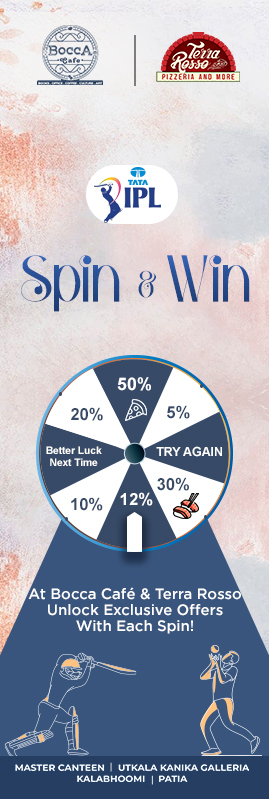The Grandeur of Rath Yatra Celebrations Across Odisha!
Even as the divine journey of the Lords in Puri remains one of the most awaited festivals for Hindus across the country, Odisha also witnesses Rath Yatra celebrations in many other parts. Interestingly, each of these celebrations has a unique set of rituals attached to them, though the majority of the traditions and practices are similar to those followed in Puri.
Let’s take a look at how the Car Festival is celebrated in different parts of the state other than Puri.
KORAPUT: WHERE TRIBALS UPLIFT THE JAGANNATH CULTURE
Among the famous tourist attractions of Koraput, ‘Sabara Srikhetra’ holds a special place in the hearts of visitors. The place is known for the magnificent white temple of Lord Jagannath and is built exactly the same way as that of Puri Jagannath temple. Puri is called as Srikhetra and as the temple originates from tribal culture and replicates the main Jagannath temple, the name ‘Sabara Srikhetra’ came into existence.
My City Links takes a closer look at the interesting customs and facts associated with Sabara Srikhetra and Rath Yatra.

Idols Made From ‘Left Over’ Logs
It was in 1969 when some intellectuals and local residents of Koraput thought of building a Jagannath temple in the main town. Incidentally, that was also the year of ‘Nabakalebara’, the rebirth ritual of the Lords in Puri temple. And, the wooden idols of the ‘Chaturdhamuti’ of Sabara Srikhetra were made from the leftover or remaining ‘Daru’ (logs of wood) that was used to make the idols in the Puri temple.
However, even as the idols were made, there was no temple to keep the Gods at that time in Koraput. Back then, the idols were kept in an asbestos house and worshipped. In 1973, ‘Bhumi Puja’ for the temple was carried out and the construction of the temple ended in 1978 when the ‘Chaturdhamurti’ was shifted to the temple. A three-day-long festival was also conducted which was attended by the Gajapati King of Puri.
The temple was constructed similar to the Jagannath temple in Puri. And therefore just like the Puri temple, the Jagannath temple at Sabara Srikhetra also has ‘Snana Mandap’, ‘Garuda Mandap’ and ‘Gundicha temple’ along with ‘Anand Bazar’ that offers Mahaprasad of the Lord to the devotees at any point of time.
Deities Across The Country Worshipped Under One Roof
Another interesting feature of the temple is that gods and goddesses who are worshipped across different parts of the country are all worshipped under one roof at Sabara Srikhetra. These include Dwarikanath, Amarnath, Kedarnath, Badrinath, Rameswar, Balaji, Kamakshi, Vaishnodevi and a few others.

‘Chherapahanra’ by Sabara Head
Car Festival is celebrated every year with great pomp and show in Sabara Srikhetra alike Puri, but with a little deviation. Before Rath Yatra, the three deities, Lord Jagannath, Lord Balabhadra and Devi Subhadra are given a bath in the Snana Mandap on the occasion of Devasnana Purnima as per the rituals followed in Puri temple. Thereafter, all gods suffer from fever due to heavy shower and go to ‘anasara ghara’ till Rath Yatra.
On the day of Rath Yatra, the lords come out of ‘anasara’ and take their seats in their respective ‘rathas’, thereby giving ‘darshan’ to their devotees.
However, the deviation in rituals takes place during ‘Chherapahanra’ (sweeping the raths with a golden broom). After the ‘Pahandi’ custom is performed with the Lords, the ‘Chherapahanra’ takes place, which is performed by the ‘Sabara Mukhia’ though, in Puri, it is carried out by the Gajapati King. As Koraput is the land of tribals, the locals also respect this deviation, agreeing to that fact that the tribals are an integral part of the entire process of Rath Yatra. Many of them also believe that the custom is a landmark step towards reducing the feeling of casteism and bringing equality in the community.

Presence of Tribals & The Charm To It
During Rath Yatra, the tribals of Koraput and nearby places come in huge numbers to see the Lord and get blessed. The festival is a means of their cultural convergence. The presence of tribals adds a different charm to the festival. They get dressed up in their traditional attire for the occasion. The tribals also display different kinds of handmade products, their traditional food and other daily use products in a ‘mela’ held specifically for the occasion.
The tribals dance to the tunes of tribal songs and instruments wearing their traditional dresses, which is a blissful and rare sight to watch.
BARIPADA: ALL ABOUT WOMEN POWER
Located in Mayurbhanj district, Sri Hari Baldev Jew Temple at Baripada is considered the second ‘Srikhetra’ of Odisha. The ‘Chaturdhamutis’ have been worshipped in this temple since long. Spread over an area of 700 acres, the temple follows the same rituals and customs like Puri Jagannath temple. And during the Car Festival, thousands of devotees come forward to be a part of the celebrations with great enthusiasm and zeal. Even people from neighbouring states throng the city to participate in the Car Festival.
However, as compared to other parts of the state and Puri, the Rath Yatra in Baripada is somewhat different. While the ritual of pulling the chariots goes on for only one day in other places, in Baripada, the process lasts for three days. That apart, another significant custom that makes the Car Festival here even more unique, is that the chariot of Devi Subhadra is exclusively pulled by women devotees.

Here are a few more interesting facts about the Car Festival in Baripada.
Goddess Ambika Is The Protector Of The Chariot
Just like in Puri, in Baripada too, the three Lords go to their aunt’s home (Mausi Maa temple) after the Car Festival. But before the lords ride on their chariots and the Rath Yatra begins, the permission of the community deity of Baripada, Maa Ambika is needed. A ‘dasi’ of the temple brings with her an ‘agyanmala’ along with a sword which is considered as the permission of the Goddess. Then, there is a ritual of ‘Parikrama’ (circumambulation) of the chariot holding the ‘agyanmala’ and sword which followed by the placing of both the mala and the sword on the chariot as symbolic representations of Maa Ambika.
According to local residents, this tradition of taking blessings and permission from Maa Ambika is being followed since time immemorial to protect and secure the chariots from any sort of accident or unfortunate mishap. After the agyanmala and sword are placed on the chariot, the three lords are brought to the chariots with all rituals and worshipping. Again, a series of rituals continue as the devotees simultaneously get ‘darshan’ of the lords. The ‘chaturdhamurtis’ are placed on the chariots after the ‘Ratha Pratistha’ and ‘Chakachhada’ rituals respectively.
When Women Pull The Chariot
Since pulling of the chariots is a three-day affair at Sri Hari Baldev Jew Temple, the Lords are taken one after the other here. On the first day, the chariot of Lord Balabhadra is pulled and taken to the Mausi Maa temple. On the second and third day, chariots of Maa Subhadra and Lord Jagannath are pulled respectively. During these days, one can literally witness a sea of devotees at the ‘Badadanda’.

However, the special attraction which everyone looks forward to is the pulling of Devi Subhadra’s chariot exclusively by women devotees on the second day. Hundreds of women come together to pull the chariot, signifying women power. Since this tradition is only prevalent in Baripada, devotees come down from nearby places too to witness this ritual, which local residents believe is symbolic of women empowerment and women power.
Tradition Started By Former CM Nandini Satpathy
It was in the year 1975 that Nandini Satpathy, who was the then Chief Minister of Odisha, had started the tradition of pulling of Devi Subhadra’s chariot exclusively by women devotees. That year, only five women had pulled the chariot from the ‘Badadanda’ to ‘Mausimaa temple’. Since then, many more women devotees have come forward to pull the chariot and express their devotion towards the Lords.

Author: MCL bureau
We are the core team of MyCityLinks. A team of dedicated persons to create some out of the box content
Read more from author


